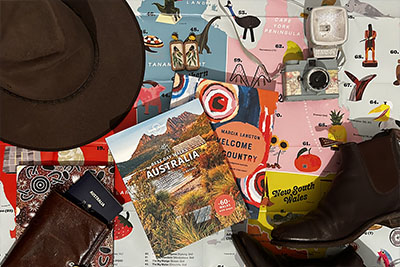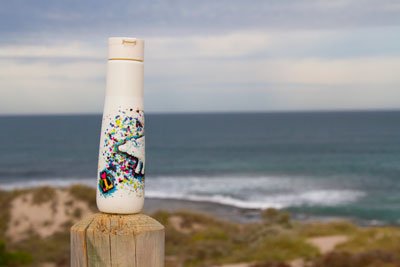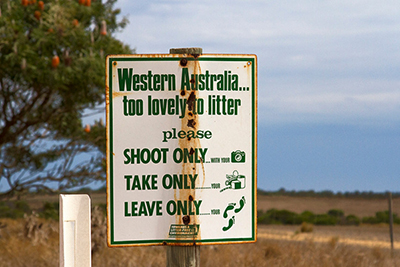How to NOT look like a tourist in Europe: 20 tips & tricks
There’s nothing worse than looking like a tourist – right? Blending in has its benefits; you won’t come across as annoying and it lowers your chances of being targeted by pickpockets. This guide will deliver to you tips and tricks to avoid looking like a tourist in Europe.

Wondering how to not look like a tourist in Europe?
Don’t worry. I’m here to help you out.
It’s a mark of being a good traveller, to want to blend into the crowd and not annoy locals too much.
On top of that, you don’t want to mark yourself out and become the target of pickpockets or scammers.
I know the first time I went to Europe, I definitely did everything wrong.
I packed the wrong clothes and wore a bumbag. My camera was huge, and I regularly got lost and confused.
Luckily, with the passing of time and a bit more experience visiting this continent, I’ve learned some tips and tricks to blending into the crowd. And I’d love to share them with you.
Read on to discover how you too can avoid looking like a tourist in Europe, and have a safe and seamless trip.
How to avoid looking like a tourist in Europe
Here are some tips, tricks and suggestions to help you blend in in Europe.

1. Wear comfortable clothes that aren’t too flashy
It’s tricky to know what to pack, especially if it’s your first time visiting Europe.
My advice is don’t leave things to the last minute (very much speaking from experience here).
In this ‘TikTok era’, I don’t really think fashion differs much around the world. As such, I’d recommend wearing what you normally would at home, while in Europe.
Go for comfortable clothes that are weather appropriate. Note that Europeans do tend to wear muted colours, rather than loud and brash prints.
And remember – Nothing screams ‘I’m not from here!’ like khaki pants or athleisure. Unless of course, you’re actually on your way to the gym or a yoga class.
2. Use a bag that sits comfortably on your chest
101 how to look like a tourist in Europe is to walk around with a hulking backpack.
A cross-body bag is great for Europe. You can keep it in front of your chest, where you’ll notice if anyone is trying to slip a hand in.
I would normally say avoid the bumbags/fanny packs, but they very much seem in vogue now. All the kids are wearing them!
So I don’t think there’s anything wrong with keeping your items in these. Wearing them across body is not only trendy, but will help you keep an eye on things.

3. Don a decent pair of walking shoes
One thing that is key, is bringing along a pair of shoes you can happily walk miles in.
I mean it. You’ll be on foot all day, checking out the sights and possibly climbing lots of tiny stairs to see star attractions.
Luckily, sneakers are very much in fashion, so there’s nothing wrong with chucking these in your suitcase, to bring with you.
A nice pair of sandals in the summertime may also do the trick. I love my Teva’s for this.
4. Don’t keep your items in your pocket
A bag is probably a better choice for storing your items, but if you must keep things in your pocket, limit the amount of items and keep an eye on them; especially in large crowds.
And don’t go wandering around with your passport, all your money and cards. Take the cash you reckon you’ll need for the day and a single card with you, and leave everything else in the safe in your hotel (or some other secure spot).
If someone slips a hand into your pocket and takes your wallet with EVERYTHING IN IT, you’ll definitely find yourself up the creek with no paddle.

5. Size matters: consider your camera
I personally love taking photos when I travel. They’re obviously helpful for this website and I largely use them as souvenirs.
So, I travel with two cameras – a Canon 7D and a GX7.
While I love my 7D, it’s a bloody big camera, so I’m quite considered with where I use it.
My GX7 is much smaller and easy to slip in and out of a small bag. So if I’m in a crowd, or don’t want the extra weight, it’s my camera of choice.
If you want to know how to avoid looking like a tourist in Europe, consider the size of your camera and how (and when!) you use it.
6. Be considerate with the selfie stick (or leave it at home)
Want to know how to look like a tourist in Europe? Easy. Walk around, inconsiderately brandishing a selfie stick.
Look, I’ve never been a fan of selfie sticks and I’m not quite sure why they’re still a thing.
Peak time for use seemed to be around 2015. I remember going running along Tower Bridge when I lived in London and having to constantly dodge them, lest I wish to lose an eye.
If you MUST use a selfie stick, please be considerate. Don’t use it in large crowds, where it can get in people’s way, or possibly cause them some kind of bodily harm.
And if there are signs around banning the use of selfie sticks, then leave it in your bag (or better yet, your hotel room).

7. Be discrete with your phone
Likewise, don’t be overly obvious with your phone.
Our phones are certainly useful for travel. eSims and data packs mean you can use online maps, rather than flapping about a giant paper version (much more subtle). Phones are also great for less obvious photos.
However, if you’re walking around very obviously on your phone, stopping directly in front of stairs, escalators and doors… well, that can be quite annoying. And signal very much that you’re a tourist in Europe.
Try not to spend all your time on your phone and take note of the world around you – and your fellow people in it.
8. Plan your trip in advance…
Europe, particularly during peak season, can be manic.
It helps to look for tips and tricks online. When you’ve decided on a European destination, research what you want to do.
Discover whether it’s absolutely something you’ll need to book in advance. Suss out the best time to visit to avoid queues.
For example: does everyone tend to go first thing in the morning, or will the early bird catch the worm?
By researching, you’ll get a good sense of the experiences and attractions worth adding to your itinerary and learn which of those may prove to be a bit of a tourist trap.
9…. but be flexible where you can
That being said, you still want to leave some room for spontaneity… and down time!
When you’ve solidly scheduled yourself, you run the risk of burning out, or missing out on a cool experience you may hear about along the way.
As a rule, I approach any trip to Europe knowing:
- How I’m getting there
- Where I’m sleeping
- At least a couple of things I want to see or do
- A few places to grab a decent meal.
That way, I still have some room for rest, or to simply allow some sort of travel magic to happen.

10. Don’t be afraid to visit off-the-path destinations
And remember, you don’t need to go where everyone else is going!
Some of my favourite times in Europe have been visiting lesser-known cities or countries. Locals tend to not have the same ‘tourist fatigue’ as popular destinations. Plus, it’s easier to blend in when you’re far from the (maddening) crowd.
Honestly, I’d prefer this any day to ticking off ‘the main sights’ or fighting crowds say on the Acropolis in Greece or within the Louvre in Paris.
11. Don’t walk irritatingly slowly along narrow paths & pavements
This is an easy tip if you wish to avoid looking like a tourist in Europe.
While it’s wonderful to take in a place you are visiting, remember there are people living there who are trying to conduct their daily business. Try your best to not get in their way!
If you’re walking in a group, stick to the right, behind one another if need be.
Don’t spread out and slowly dawdle along a path, forcing those behind you to have to walk onto the road to get around you.

12. Be considered in where you stay
Accommodation can make or break a trip. And the kind of accommodation you pick can help you not look like a tourist in Europe.
One tip as a responsible traveller, is to avoid booking via AirBnb. While regulations for apartments have improved over time, apartments booked via this service are places taken off the market for locals.
Plus booking services such as this are a bit wild west, with faceless or absent hosts when things go wrong.
Hotels are handy, in that there is usually someone on hand to contact if needed; a face to put to any requests.
13. Use public transport where possible
For the true non-tourist experience in Europe (and likewise, to save a fair bit of dosh) dispense with the taxis and rideshares, and use public transport instead.
Many European cities have fantastic public transport options, consisting of trains, trams and buses. Some also offer bundled tickets, which last for 24/48/72 hours, so you can save on cash while exploring the city.
That being said, don’t discount the cheapest type of transport; your own two feet. If a destination or attraction is walkable, then why not do just that and take in the sights along the way?
The last thing you want to do is clog up public transport options for locals who are going about their day.

14. Ask locals for recommendations on where to eat
Do you travel mainly to eat? Mmmm, I hear you.
Don’t be afraid to ask for a recommendation if you’re chatting to citydwellers while you’re out exploring. If I need a good food suggestion, I also get recommendations from hotel staff; they can usually point you in the right direction.
Plus this way, you’re supporting local and probably small businesses, and spreading that tourist dollar to where it is needed.
15. Don’t flash the cash around
Speaking of dollars…
Gone are the days of having to travel with wads of cash. Financial companies like Wise make currency conversion on the go simple. Plus many banks now allow for overseas transactions with great conversion rates and little to no fees.
I don’t want to completely discount cash; it’s definitely important from a societal point of view to ensure it doesn’t completely disappear. And it’s always good to have some of the local currency on you, in case a EFTPOS machine declines to work or you’re spending a small amount that seems totally ridiculous to put on card.
However, there’s really no excuse to throw wads of cash around and nothing says ‘I am a tourist’ in Europe quite like this!
A discrete tap of a card or slip of a bill will help you not look like a tourist in Europe.

16. Do your research when booking experiences involving animals
Over the last decade or so, there has thankfully been a backlash against what was once commonly accepted experiences involving animals.
Tourists riding donkeys up and down stairs on Greek Islands or mistreated elephants in Thailand. Getting up close to and patting drugged and chained tigers (and then the weird trend of using these photos on one’s Tinder profile).
Visiting ‘animal cafes’, where the wildlife are often treated to harsh conditions, such as nocturnal animals having to essentially keep ‘office hours’, causing them great stress.
We know a little more about these practises now and should definitely think twice before taking part in them.
On a personal note. I am a total horse girl and love to ride around the world.
I haven’t had a bad experience with this in Europe, but an unpleasant ride in Cuba has led me to make sure I thoroughly do my research, before riding anywhere in the world.
Are the horses treated well? Are they not overused? Do they have access to shade, food and water? Do the handlers seem to genuinely care for them?
These are all excellent questions to ask.
There’s nothing worse than being a clueless tourist, participating in some kind of questionable experience involving animals.

18. Learn some of the local language & etiquette
Obviously, no one is expecting you to display full fluency in the country’s language, on your first visit.
However, it is polite to learn a few key phrases, even if English is spoken widely. It’s also an excellent way to not look like a tourist in Europe.
At the minimum, I learn how to say:
- Hello or good day
- Please
- Thank you
- Goodbye.
It’s also helpful to learn the phrase for ‘I don’t speak (insert local language here)’ or ‘Do you speak English?’.
Likewise, it’s handy to suss out what is accepted etiquette in the countries you’re visiting.
For example, don’t jaywalk in countries where it is considered culturally unacceptable, like Japan (not in Europe, sure, but I’m making a point here!).
Research whether it is necessary to tip. This is something that comes naturally to Americans, but it’s not first nature for Australians like myself.
If you want to know how to not look like a tourist in Europe, little things like this go a long way.
17. Don’t be afraid to participate in local customs
You’re here to experience this country properly, right? So don’t be scared to dive in and do just that.
Some customs may seem, well, totally foreign to you (like drinking on the streets or the relaxed attitude to public nudity on beaches, in parks and at saunas).
But experiences like this can enhance your trip, or at the very least, give you a good story.

19. Perhaps plan your visit for any time other than summer?
Here’s one surefire way to not look like a tourist in Europe; visit during the shoulder seasons (spring and autumn) or even winter, to avoid the crowds.
To be honest, I’ve never travelled to Europe during the summer, until this year (2023). It was unavoidable due to a wedding I was attending and I was plenty shocked by the crowds!
I was so glad I’d organised to do a lot of activities in advance, so I didn’t feel like I was missing out, too much.
My favourite months to visit Europe are May, September and October. It’s not too busy, not too hot… just about right.
20. Don’t beat yourself up for making mistakes
This in my opinion, is the most important point on this list.
No one is perfect and we all slip up.
I had someone mutter ‘tourists’ at me when I was recently walking single file along the pavement in Athens, behind my partner, simply navigating to my accommodation from the train.
The most important thing is to be self-aware.
If you do make a mistake, endeavour to learn from the experience. That was, you won’t find yourself doing it again, in a hurry!

Now you should know how to not look like a tourist in Europe
If you do your best to avoid looking like a tourist in Europe, it will not only be helpful to locals; you’ll have a better trip for it.
I hope you’ve learned a few tips and tricks, to help you blend into the crowd.
If you’re visiting Europe for the first time and need some guidance, you might find these itineraries handy:
- How to spend four days in London
- Four day Berlin itinerary: exploring Germany’s quirky capital
- Two day Amsterdam itinerary for first-timers
- The ultimate two week road trip itinerary for Ireland
For more, check out my guide to looking like a local in London, what not to do in the UK and in Australia.
You may want to learn how to integrate the 12 permaculture principles into your travels.
And my friend Alyse has a whole series on blending in around the world; well worth checking out, as she is an expert on being an Invisible Tourist.







